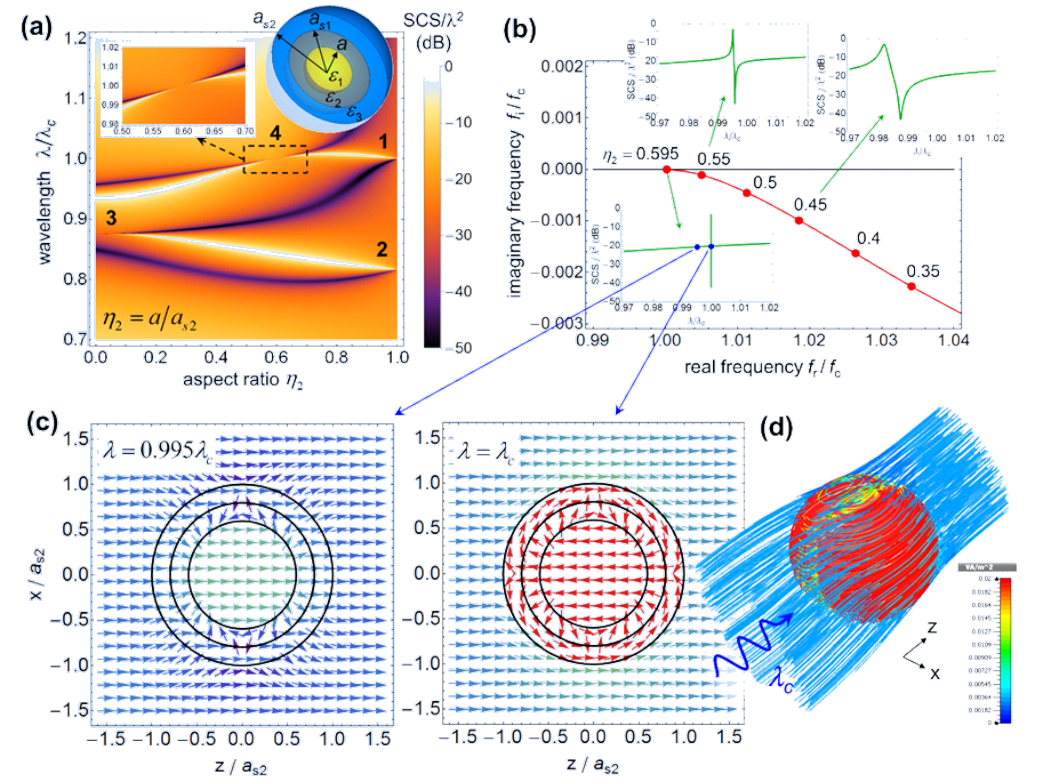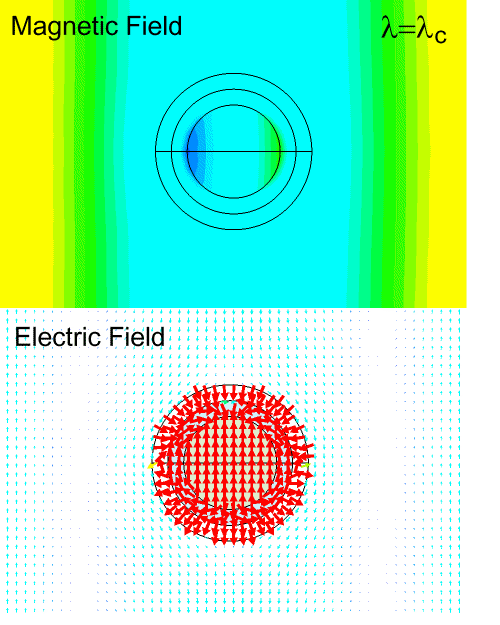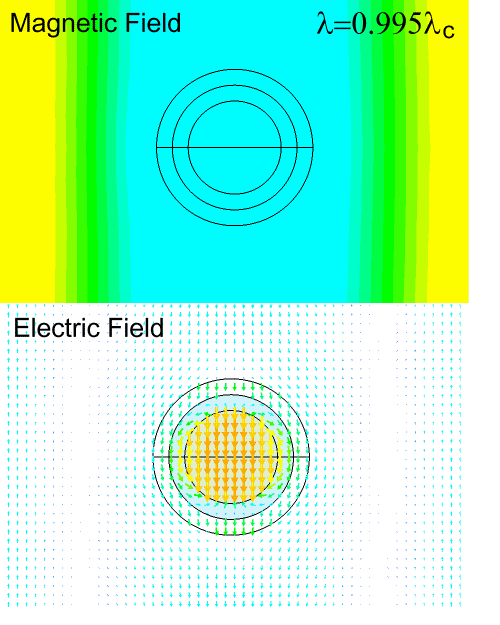


RESEARCH HIGHLIGHTS (4/8)

Trapping Light in Plain Sight:
Embedded Eigenstates in Open 3D Nanostructures
Being able to confine and localize light in small volumes is of paramount importance in several scenarios, e.g., for sensing, data storage and
processing. In finite-size open systems, however, any optical state is known to gradually lose its energy by coupling with radiation modes in the
surrounding environment, resulting in finite oscillation lifetime. For this reason, light confinement is conventionally achieved by suppressing
these radiation channels, “closing” the source region with reflectors or photonic band-gap materials. It has recently been pointed out that ideal
optical bound states with infinite lifetime may also interestingly exist within the continuum of radiation modes in open unbounded 2D
structures (photonic crystal slabs) [1], in analogy with so-called “embedded eigenstates” in quantum systems [2]. These setups however require
infinitely large apertures. In recent works [3]-[4], Silveirinha and our group independently showed that ideal light confinement can be
surprisingly achieved also in finite-size three-dimensional open structures, even in the presence of symmetry-compatible radiation channels.
Notably, we have theoretically demonstrated ideal light trapping with infinite lifetime in open metallo-dielectric nanocavities in the limit of
vanishing material loss. It was previously shown that composite multi-layered nanoparticles may exhibit Fano scattering resonances, arising
from the interference of different plasmon modes [5]. Interestingly, we observed that, by varying the composition of plasmonic and dielectric
materials, the resonance lifetime of these resonances can diverge at specific singular frequencies (a), as the coupling to free-space radiation is
suppressed.
This feature represents the fingerprint of an optical bound state with zero radiation loss – and therefore infinite lifetime – remarkably realized in
an open system without altering the photonic density of states of the surrounding environment. Our investigations shed light on the generation
and dynamics of these embedded scattering eigenstates existing within the radiation continuum (b). This phenomenon may lead to extreme
light localization and enhancement (see animations), as the impinging energy is trapped in a self-sustained power flow within the open cavity
(c-d). These findings demonstrate a fundamental mechanism for light confinement in open systems, enabled by plasmonic materials, with
exciting possibilities for enhanced nonlinearities, thermal ablation, nanolasing, data storage and sensing.
[1]
C.W. Hsu et al. Nature 499, 188 (2013).
[2]
F.Capasso et al. Nature 358, 565 (1992).
[3]
M.G. Silveirinha, Phys. Rev. A 89, 023813 (2014).
[4]
F.Monticone and A.Alù, Phys. Rev. Lett. 112, 213903 (2014).
[5]
F.Monticone et al. Phys. Rev. Lett. 110, 113901 (2013).
(Adapted from [4]) (a) Scattering cross section for the composite nanosphere in the inset, as a function of wavelength and aspect ratio.
Numbers denote disappearing Fano features, as their lifetime diverges. (b) Evolution of the complex eigenfrequency of the nanoparticle eigenmode
4,
for different aspect ratios (insets: corresponding scattering spectra). An ideally bound state arises when its eigenfrequency becomes real.
(c) Power distribution under plane-wave illumination, at the embedded eigenstate frequency (right) and slightly off-resonance (left);
(d) power flow distribution.








Embedded
eigen-state:
Time
animation
of
the
magnetic
field
(top)
and
electric
field
(bottom)
for
a
composite
nanosphere,
under
plane
wave
illumination,
at
the
frequency
of
the
embedded
eigenstate
supported
by
the
scatterer.
The
fields
are
highly
enhanced
and
localized
inside
the
particle,
which
acts
as
an
open
magnetic
cavity,
supporting
an
optical
bound
state
very
weakly
coupled
to
the
outside
radiation.
Different
from
conventional
plasmonic
resonances,
here
the
external
scattering
is
weak,
while
the
impinging
energy
is
trapped
in
a
self-sustained
power
flow
within the open cavity.
Right
off-resonance:
Time
animation
of
the
magnetic
field
(top)
and
electric
field
(bottom)
for
a
composite
nanosphere,
under
plane
wave
illumination,
at
a
frequency
slightly
detuned
from
the
eigenfrequency
of
the
embedded
eigenstate
supported
by
the
scatterer.
The
impinging
power
simply
flows
through
the
particle
as
one
would
expect
in
a
weakly scattering nanostructure.























